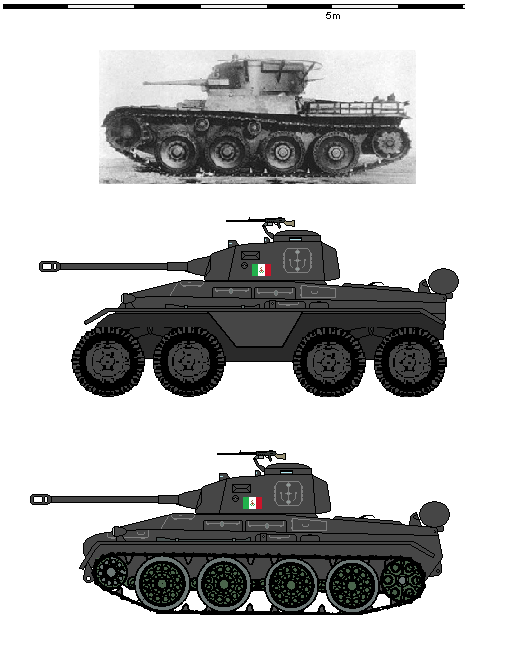You are not logged in.
Dear visitor, welcome to WesWorld. If this is your first visit here, please read the Help. It explains in detail how this page works. To use all features of this page, you should consider registering. Please use the registration form, to register here or read more information about the registration process. If you are already registered, please login here.

This post has been edited 1 times, last edit by "Desertfox" (Jul 4th 2013, 9:01am)
Well I would assume its similar to the German BK 5cm cannon, so say a 22 round magazine.
All are good points, but in this case it is felt that the drawback are outweighed by the benefits. The tank is not a frontline combat vehicle, the gun is mainly for self-defense. Adding a fifth crew member would add weight and require a redesign, while Mexico already had a suitable weapon that was developed for the TNCA A-10 Javalina. This tank should really not be getting into protracted gun fights.
Hmm, I forgot to add smoke grenade launchers.
Quoted
I used the wrong word, a scout will be on the frontlines, but should avoid combat as it detracts from its primary role of scouting, and a tank that is firing is a tank that is easy to spot. A half-track might be easier, but one of the lessons that will come from combat is that both wheeled and half-track vehicles have a hard time keeping up with fast moving armored columns. So while it is more expensive to have a specialist tank, Mexico feels it is worth it, especially since only a single division will have them and numbers will be limited.
Quoted
Do you know how much the 5cm KwK 39 L/60 gun weights? I found a value of 1,200lbs for the BK 5, and I assumed it would be light due to its aerial origins.
Precisely; however, that won't work with the engine you have selected. With 1940s technology an engine that size is physically too large to fit forward alongside the driver, and as it is air cooled (IIRC), you risk cooking everybody.On the AT-40 the engine is at the rear like on the Hellcat, but I think it would need to be moved to the front on the APC to allow for doors on the rear.
Forum Software: Burning Board® Lite 2.1.2 pl 1, developed by WoltLab® GmbH
